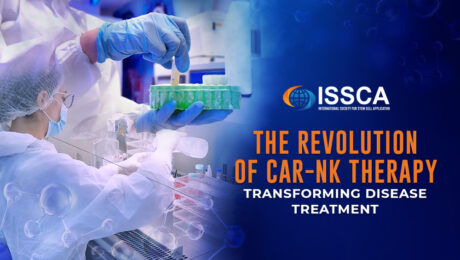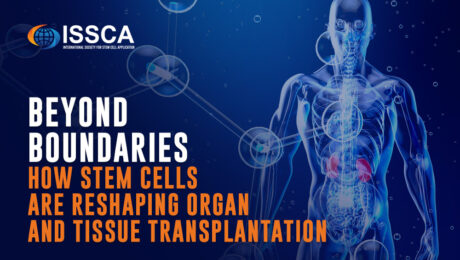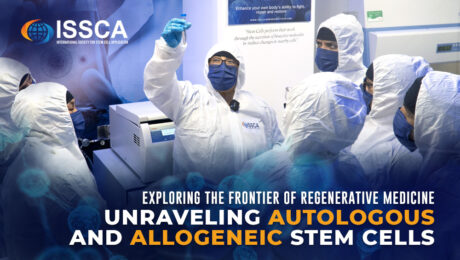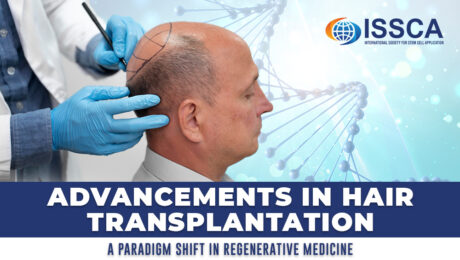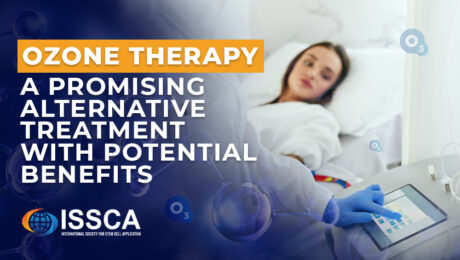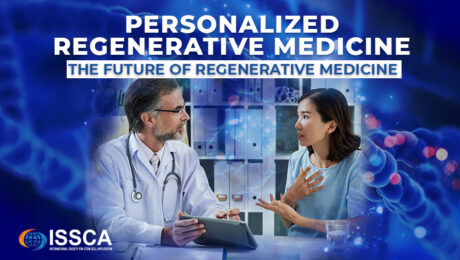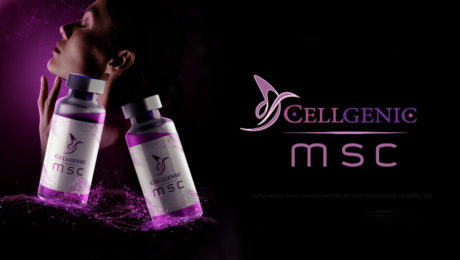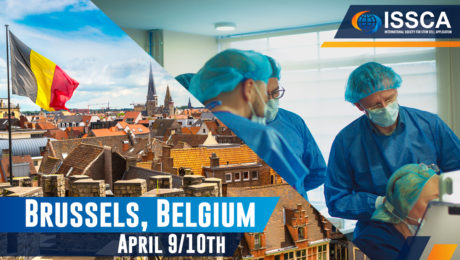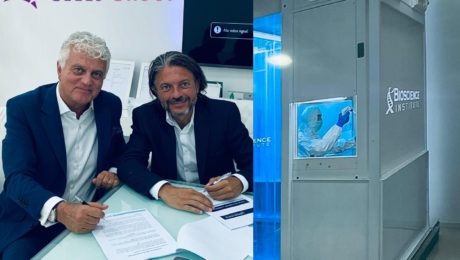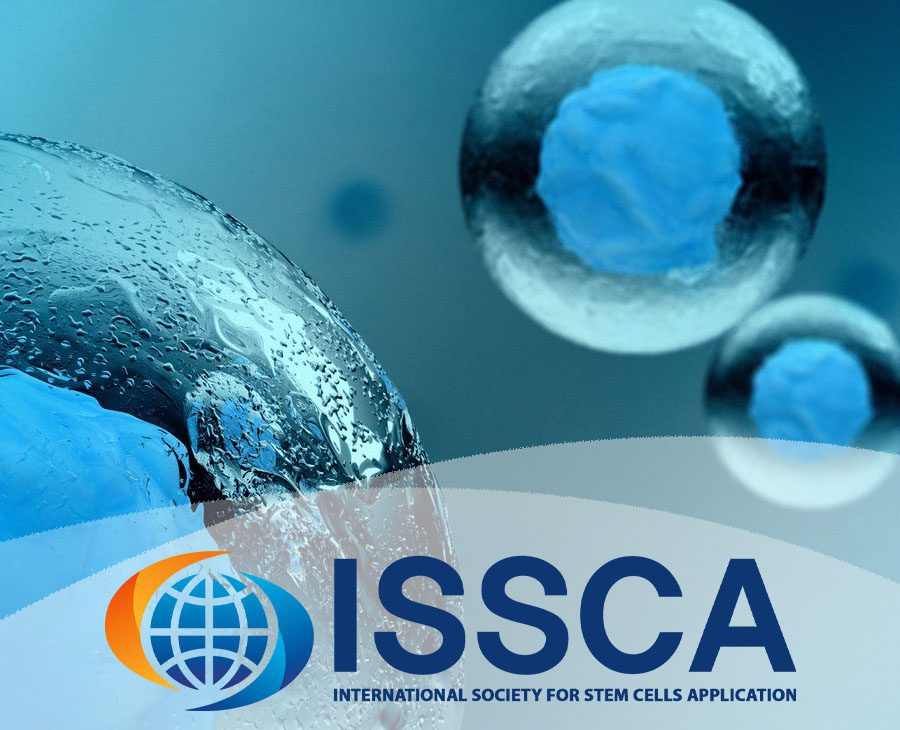The Revolution of CAR-NK Therapy: Transforming Disease Treatment
In the ever-evolving landscape of medical innovation, one breakthrough stands out—a transformative approach known as CAR-NK therapy. This groundbreaking development has the potential to revolutionize disease treatment, offering a safer and more effective solution for patients. Join us as we delve into the five pivotal aspects of CAR-NK therapy, reshaping the future of medical care.
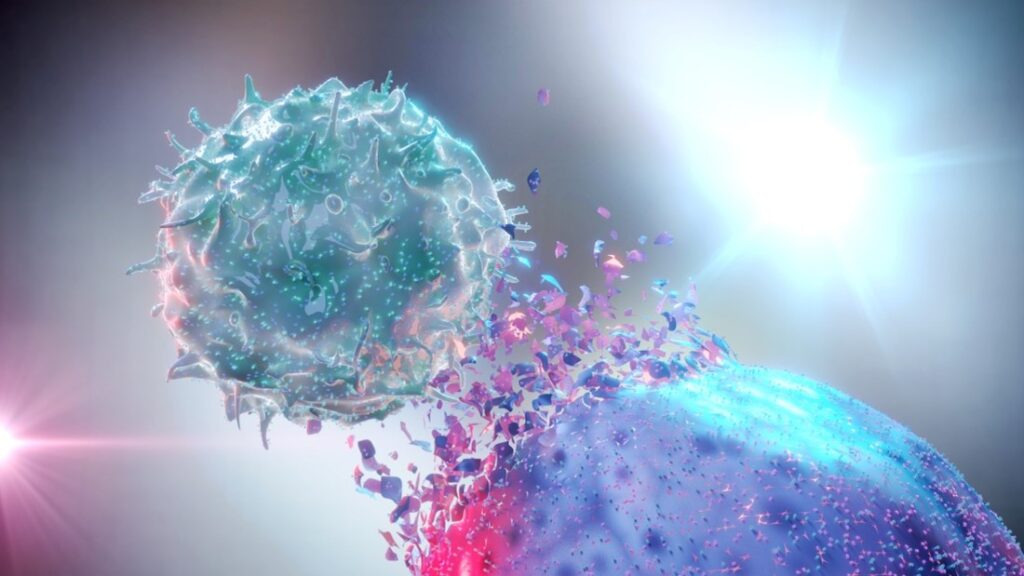
CAR-NK Therapy: Why is it a Game-Changer in Disease Treatment
1. Enhanced Safety and Versatility:
At its core, CAR-NK therapy represents a monumental shift in the treatment of various medical conditions. What sets it apart is its enhanced safety and versatility. Unlike its predecessor, CAR-T therapy, which uses the patient’s own T cells, CAR-NK cells can be derived from healthy donors or stem cells. This distinction significantly reduces the risk of complications, including graft-versus-host disease and cytokine release syndrome, which can sometimes accompany CAR-T therapy. Moreover, CAR-NK cells can be stored and used off-the-shelf, making them more readily available for patients in need.
2. Effective Against a Wide Range of Diseases:
The versatility of CAR-NK therapy extends to its effectiveness against a diverse spectrum of diseases. These remarkable cells possess the ability to target multiple antigens present on various cell types. From hematologic conditions to solid tumors, CAR-NK therapy demonstrates remarkable efficacy. Furthermore, it has the potential to counteract the mechanisms employed by cells to evade the immune system, such as immunosuppression and antigen loss.
3. Cost-Efficiency and Speedy Production:
Another compelling aspect of CAR-NK therapy is its cost-efficiency and rapid production. In comparison to the complex and personalized approach required for CAR-T therapy, CAR-NK cells can be manufactured on a larger scale. This streamlined production process significantly lowers costs, making this innovative therapy more accessible to a wider range of patients. The affordability of CAR-NK therapy brings us one step closer to a future where cutting-edge treatments are within reach for all.
4. A Thriving Field with Promising Potential:
While CAR-NK therapy is still in its early stages of clinical development, the initial results are promising and encouraging. Researchers and medical professionals worldwide are working tirelessly to unlock its full potential. Early trials have demonstrated its safety and efficacy, raising hopes for further breakthroughs in disease treatment.
CAR-NK therapy represents a monumental leap forward in disease treatment. At ISSCA.com, we are dedicated to advancing knowledge in the realm of regenerative medicine. We invite you to explore the transformative possibilities of CAR-NK therapy and its potential to reshape the future of medical care. As we journey together, you’ll discover that the horizon of possibilities in healthcare is continually expanding.
Explore our courses and international congresses at ISSCA.com to deepen your knowledge in regenerative medicine.
- Published in Blog
Beyond Boundaries: How Stem Cells Are Reshaping Organ and Tissue Transplantation
Stem Cells: Pioneers of Regeneration
Within the sacred corridors of medical advancement, a profound transformation is silently taking place, poised to reshape the very foundations of organ and tissue transplantation. Envision a realm where donor shortages and the specter of immune system rejection fade into history, and where medical horizons stretch to unprecedented frontiers. In this immersive voyage, we embark on a journey to unmask the enigmatic power of stem cells in the realm of transplantation, a journey that invites you to witness the precipice of medical progress.
The Choreography of Compatibility
Navigating the intricate choreography of compatibility between donor and recipient is one of the most formidable tasks in transplantation. The ever-watchful immune system often triggers rejection, undermining even the most meticulous transplantation endeavors. Yet, stem cells are orchestrating a symphony of change. Through ingenious techniques, researchers are tapping into stem cells’ immunomodulatory prowess, crafting an environment of harmonious coexistence between donor and recipient. This revolutionary approach not only mitigates the risks of rejection but also broadens the spectrum of viable donors.
A Symphony of Science
The harmony between stem cells and transplantation is not an untested hypothesis; it’s a symphony composed through rigorous scientific exploration. An extensive repertoire of peer-reviewed studies, gracing the pages of prestigious journals such as The Lancet and Nature Communications, underscores the potential of stem cells to elevate transplant success rates. These studies illuminate advancements spanning from refining graft survival to hastening the regeneration of vital tissues, a resounding affirmation of the transformative capabilities underpinning stem cell-driven transplantation.
Embark on a Journey of Revelation
Eager to unravel the mysteries encapsulating stem cell-powered transplantation? We extend a heartfelt invitation to embark on an illuminating expedition through our comprehensive training courses in regenerative medicine. Enrich your understanding under the tutelage of eminent experts, delving into the most recent breakthroughs, evidence-based methodologies, and clinical applications. Step into a realm where the boundaries of medical possibilities are redrawn, where your perception of transplantation is enriched, and where you assume the mantle of a pioneer in the regenerative revolution.
The fusion of stem cells and organ transplantation isn’t confined to the realm of scientific speculation; it represents a monumental stride towards re-scripting the destinies of countless lives. As we venture into an epoch where medical accomplishments redefine our limits, the expedition becomes all the more exhilarating.
Join us at issca.us, where the convergence of science and hope awaits. Immerse yourself in the vanguard of regenerative medicine, where the transformative prowess of stem cells beckons. Together, we shall forge ahead, empowered by the symphony of possibilities, shaping a brighter, healthier future for generations to come.
- Published in Blog
Exploring the Frontier of Regenerative Medicine: Unraveling Autologous and Allogeneic Stem Cells
WEDNESDAY, 06 SEPTEMBER 2023 / PUBLISHED IN BLOG
Exploring the Frontier of Regenerative Medicine: Unraveling Autologous and Allogeneic Stem Cells
In the realm of modern medicine, a groundbreaking field has emerged, promising to reshape the way we approach healing and rejuvenation – regenerative medicine. At the heart of this revolution lie stem cells, the unsung heroes of tissue repair and regeneration. In this comprehensive exploration, we delve into the intricate differences between two crucial types of stem cells: autologous and allogeneic. Prepare to be captivated by the scientific intricacies that underpin these extraordinary cells and discover how they’re poised to redefine medical possibilities.
Autologous Stem Cells: A Personalized Touch
Imagine harnessing the power of your body’s own natural healing abilities. Autologous stem cells make this vision a reality. Derived from your own tissues – be it bone marrow, adipose tissue, or other sources – these cells hold the promise of personalized healing. The process involves harvesting the stem cells, processing them to enhance their therapeutic potential, and then reintroducing them into the body. This “self-healing” approach minimizes the risk of rejection and side effects, making autologous stem cell therapies an attractive option for many.
Scientific Precision
Autologous stem cell therapies are supported by a wealth of scientific evidence. Studies published in esteemed journals like the Journal of Translational Medicine and Stem Cell Research & Therapy have highlighted their potential in diverse applications, from musculoskeletal disorders to cardiovascular conditions. This approach holds immense promise for targeted healing while minimizing the risk of immune system complications.
Allogeneic Stem Cells: A Shared Resource for Healing
In the quest for regenerative solutions, allogeneic stem cells emerge as a game-changer. These cells are sourced from carefully screened donors and subsequently administered to patients. By tapping into a shared pool of stem cells, medical practitioners can provide a standardized treatment option that’s readily available. Allogeneic stem cells hold the potential to address a broad spectrum of conditions, offering a versatile and accessible avenue for regenerative therapies.
Scientific Validation
The science behind allogeneic stem cell therapies is compelling. Rigorous research published in renowned journals such as the Journal of Stem Cells and Development and Stem Cells Translational Medicine has underscored their efficacy in various medical scenarios. This approach not only broadens the scope of treatment but also expedites the therapeutic process, presenting an exciting frontier in regenerative medicine.
Embrace the Future with Knowledge
Intrigued by the dynamic interplay of autologous and allogeneic stem cells in regenerative medicine? We invite you to embark on a transformative journey of discovery through our comprehensive training courses. Our platform offers unparalleled insights into the latest advancements, evidence-based practices, and clinical applications of these remarkable stem cells. Guided by esteemed experts in the field, our courses provide a unique opportunity to stay at the forefront of regenerative medicine’s evolution.
As the horizon of medicine expands to encompass regenerative possibilities, autologous and allogeneic stem cells take center stage. These cellular protagonists hold the key to unlocking personalized healing and broad-spectrum rejuvenation, ushering in an era of medical advancement like never before. Join us in our mission to unravel the mysteries of regenerative medicine and explore the profound potential of stem cells. Visit issca.us today, and together, let’s embark on a journey that could reshape the landscape of healthcare for generations to come.
- Published in Blog
Advancements in Hair Transplantation: A Paradigm Shift in Regenerative Medicine
WEDNESDAY, 09 AUGUST 2023 / PUBLISHED IN BLOG
In the realm of regenerative medicine, hair transplantation has experienced remarkable progress in recent years. As part of a multidisciplinary community of physicians and scientists dedicated to advancing the field, it is essential to stay informed about the latest developments in this area. This blog post aims to provide a comprehensive overview of the cutting-edge advancements in hair transplantation, highlighting the convergence of science, technology, and practice.
Tissue Engineering in Hair Transplantation
The integration of tissue engineering principles into hair transplantation has opened new avenues for regenerative medicine. Scientists are actively exploring the use of biomaterials, growth factors, and scaffolds to create an optimal environment for transplanted hair follicles. By nurturing follicular cells, tissue engineering techniques hold immense potential in enhancing transplantation outcomes and promoting tissue regeneration.
Stem Cell-Based Approaches
Stem cell therapy has emerged as a promising strategy within the realm of hair transplantation. Researchers are investigating the utilization of mesenchymal stem cells (MSCs) and adipose-derived stem cells (ADSCs) to stimulate hair follicle regeneration. These unique regenerative cells promote hair growth and significantly enhance the success rate of transplantation procedures. Ongoing research in stem cell-based therapies continues to unveil their potential to revolutionize hair restoration techniques.
Gene Therapy for Hair Loss
Gene therapy is gaining traction as a cutting-edge approach to addressing hair loss at its core. Scientists aim to develop innovative treatments for both genetic and acquired forms of hair loss by manipulating genes involved in hair growth and regulation. Techniques such as CRISPR-Cas9 gene editing hold immense potential for altering gene expression associated with hair follicle development, offering personalized regenerative therapies.
Nanotechnology in Hair Transplantation
Nanotechnology has paved the way for groundbreaking advancements in hair transplantation. Researchers are exploring the application of nanomaterials and nanoparticles to enhance the targeted delivery of growth factors, drugs, and stem cells directly to the hair follicles. This precise and controlled release optimizes the regenerative potential of transplanted hair follicles, leading to improved treatment outcomes and faster healing.
Artificial Intelligence (AI) and Machine Learning
The integration of AI and machine learning algorithms has transformed various medical fields, including hair transplantation. AI-powered technologies assist in precise hair follicle extraction, optimizing graft placement, and predicting post-transplant outcomes. By analyzing vast datasets and patterns, AI algorithms enhance decision-making, improve surgical techniques, and contribute to personalized treatment plans in hair transplantation.
As active contributors to the advancement of regenerative medicine, staying informed about the latest developments in hair transplantation is crucial. Tissue engineering, stem cell-based approaches, gene therapy, nanotechnology, and the integration of AI and machine learning are reshaping the landscape of hair restoration. By remaining at the forefront of these advancements, physicians and scientists can harness the power of regenerative medicine to effectively treat hair loss and alleviate human suffering.
Join us at issca.us and let us continue to collaborate, innovate, and explore the limitless potential of regenerative therapies.
- Published in Blog
Ozone Therapy: A Promising Alternative Treatment with Potential Benefits
MONDAY, 24 APRIL 2023 / PUBLISHED IN BLOG
Ozone therapy is a promising alternative medical treatment that has gained popularity in recent years. It involves the administration of ozone, a form of oxygen, to treat various medical conditions, ranging from chronic pain to infections. Although the scientific evidence on the effectiveness of ozone therapy remains limited, many people claim to have experienced significant health benefits from this alternative treatment. In this article, we’ll explore the potential benefits and risks of ozone therapy, as well as the latest research on this alternative medical treatment.
What is Ozone Therapy?
Ozone therapy is a safe, non-invasive, and effective alternative medical treatment that has been used for over a century. It involves the administration of ozone, a gas made up of three oxygen atoms, to the body in various forms, such as injections, insufflations, or topical applications. Ozone is a powerful oxidant that can damage cells and tissues, which can have positive or negative effects, depending on the form and amount of ozone used.
One of the key benefits of ozone therapy is its ability to improve blood circulation and oxygen delivery to the tissues, which can help reduce inflammation, support wound healing, and boost immune function. Additionally, ozone therapy is believed to have antimicrobial and antiviral properties, which may help fight infections caused by bacteria, viruses, and fungi.
Potential Benefits of Ozone Therapy
Ozone therapy has been used to treat a wide range of medical conditions, including:
- Chronic Pain: Ozone therapy may help reduce pain and inflammation in conditions such as osteoarthritis, herniated discs, and fibromyalgia.
- Infections: Ozone therapy may help fight infections caused by bacteria, viruses, and fungi, including Lyme disease, hepatitis, and HIV.
- Autoimmune Diseases: Ozone therapy may help reduce inflammation and improve immune function in conditions such as multiple sclerosis, rheumatoid arthritis, and lupus.
- Skin Conditions: Ozone therapy may help treat various skin conditions, including eczema, psoriasis, and acne, by improving blood circulation and oxygenation.
Moreover, ozone therapy is a safe and non-invasive treatment that doesn’t have the side effects commonly associated with traditional medical treatments. It’s also relatively inexpensive and can be administered in a variety of settings, including clinics, hospitals, and private practices.
Latest Research on Ozone Therapy
Although the scientific evidence on the effectiveness and safety of ozone therapy remains limited, some recent studies have suggested that ozone therapy may have potential health benefits in certain conditions.
- Immunomodulatory Properties: A study published in the Cuban journal of immunology describes the immunomodulatory properties of ozone therapy by characterizing the biological effects of ozone on immune system cells, soluble mediators, and other cell types.
- Pain Management: A 2022 review on ozone therapy in pain medicine highlights the high safety of pain treatments with ozone therapy, especially modern medical ozone generators with great precision.
- Diabetic Pain Relief: A 2020 study on systemic ozone therapy in insulin-dependent diabetic patients found that the analgesic and anti-inflammatory properties of ozone make it one of the most efficient therapeutic tools for controlling chronic pain in insulin-dependent diabetic patients.
Conclusion
Ozone therapy is a promising alternative medical treatment that has been used to treat various medical conditions. Many people claim to have experienced significant health benefits from this alternative treatment. Furthermore, ozone therapy is a safe and non-invasive treatment that doesn’t have the side effects commonly associated with traditional medical treatments.
If you’re interested in ozone therapy, make sure to do your research, ask questions, and consider this alternative medical treatment as a potential option for your health concerns. It’s important to stay informed about the latest developments in stem cell therapy. You can learn more about regenerative medicine and stem cells by enrolling in our international certification program at www.issca.us.
- Published in Blog
Personalized Regenerative Medicine: The Future of Regenerative Medicine
MONDAY, 17 APRIL 2023 / PUBLISHED IN BLOG
Regenerative medicine is a rapidly growing field that focuses on repairing or replacing damaged or diseased tissues and organs using stem cells, growth factors, and other advanced therapies. The effectiveness of this approach has been demonstrated in treating a wide range of conditions, including heart disease, diabetes, joint pain, and neurological disorders. One of the major challenges of regenerative medicine, however, is that not every patient responds to the same treatment. This is where personalized regenerative medicine comes into play.
What is Personalized Regenerative Medicine?
Personalized regenerative medicine involves tailoring treatments to meet the unique needs of each patient based on their genetic profile, lifestyle, and medical history. This approach recognizes that no two patients are the same and that a one-size-fits-all approach to regenerative medicine is not always effective.
As part of personalized regenerative medicine, advanced technologies such as genomics, proteomics, and metabolomics are used to analyze a patient’s unique biological profile. Regenerative medicine centers utilize this information to develop personalized treatment plans tailored to their individual needs and conditions, ranging from stem cell therapy to gene therapy.
Why is Personalized Regenerative Medicine the Future of Regenerative Medicine?
There are several reasons why personalized regenerative medicine is the future of regenerative medicine:
More Effective Treatments
By tailoring treatments to individual patients, personalized regenerative medicine has the potential to be much more effective than traditional one-size-fits-all approaches.
Improved Patient Outcomes
Because personalized regenerative medicine takes into account the unique needs and conditions of each patient, it has the potential to improve patient outcomes and reduce the risk of complications.
Lower Healthcare Costs
By providing more effective treatments and reducing the risk of complications, personalized regenerative medicine has the potential to lower healthcare costs in the long run.
Better Understanding of Disease
Personalized regenerative medicine involves analyzing a patient’s unique biological profile, which can help researchers and healthcare providers better understand the underlying mechanisms of disease.
Advancements in Technology
As technology continues to advance, personalized regenerative medicine will become even more precise and effective, leading to even better patient outcomes.
Conclusion
The concept of personalized regenerative medicine is an exciting new approach to regenerative medicine that has the potential to revolutionize the healthcare industry. Individualized regenerative medicine has the potential to be more effective, improve patient outcomes, lower healthcare costs, and provide better understanding of disease by tailoring treatments to the individual patient. As technology continues to advance, we can expect to see even more exciting developments in this field in the years to come.
You can learn more about regenerative medicine and stem cells by enrolling in our international certification program at www.issca.us.
- Published in Blog
How Cellgenic MSCs Revolutionize Regenerative Medicine
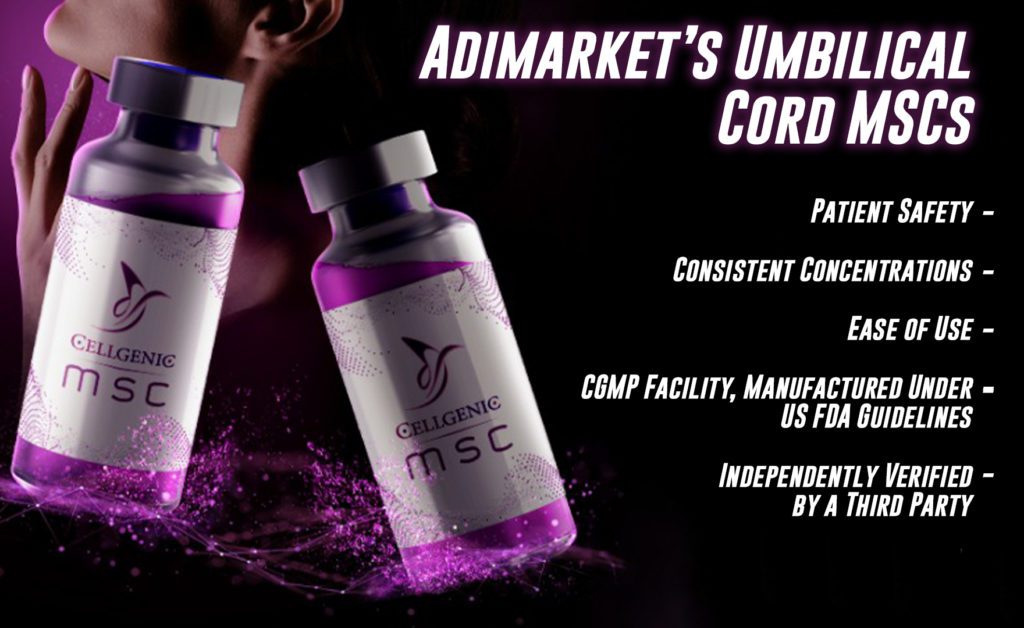
Stem Cells are revolutionizing the field of regenerative medicine, due to their intelligence. Once administered into the patient, they are able to identify and target areas of disease and damage. Adimarket’s Mesenchymal Stem Cell Product excretes growth factors, cytokines, and proteins, which all play a key role in the regeneration of tissue. Their anti-inflammatory and immunomodulatory properties mean that it is difficult for them to be rejected by the body. Additionally, they increase blood flow to the vital organs which need it the most.
Many proprietors of MSC products will claim that it is not necessarily important to have a high ratio of viable cells. They claim that it does not matter how many cells are ‘not viable’, or dead, so long as there is a high enough number of viable cells– however, current research has shown that this is not the case. These dead cells are detectable by the immune system, and it is believed that they can create an inflammatory response within the body at the treatment area, which would lower the effectiveness of the regenerative medicine treatments.
This bending of the science is harmful to our industry, which is why knowledgeable purveyors put one thing above all else– consistency. Our cellular concentrations are the same throughout each batch, and we make sure that there is a high ratio of viable cells. All of our samples are independently verified by a third party laboratory, and have been selected for their phenotypic and genotypic profile, characterized for optimum growth and stability. When the proper care is taken, Mesenchymal Stem Cell products have been identified as having the highest output of growth factors and stem cell factors among the current standards of care– as well as properties of angiogenesis, immunomodulation, and the potential for endogenous repair.
Cellgenic has been working for over a decade, constantly reinventing itself and reinforcing the products that we offer with the latest advancements in the field of regenerative medicine. We take every painstaking measure possible to ensure that the cellular samples that our customers use to treat their patients are second to none– this includes the consistent concentrations of our sample, which are the same throughout ensuring that every patient gets the same treatment. We offer the product in 10 million or 30 million live total nucleated cells, where other fabricators would have the same number of total cells. We ensure that every single product that we send out has been tested for low amounts of annexin, which is a cellular protein which serves as a marker for cell death.
All our Mesenchymal Stem Cell products come in 1cc vials cryogenically preserved– they are shipped overnight within the United States, conveniently delivered to your door in the morning. For use, the product is passively thawed between the palms of your hands– and ready to use when your patients are. MSC 10 contains 10 million live cells and is recommended for a single joint, or a small area. However, the MSC pure pro has 30 million live cells,and can be used for larger applications, or for up to three joints in the same patient at the same time.
If you are interested in finding out more about Cellgenic MSCs, you can send an eMail to info@stemcellsgroup.com
- Published in News
Global Stem Cells Group Announces Training in Brussels, Belgium for April 9/10th
The Global Stem Cells Group, a multi-disciplinary community of scientists and physicians that are collaborating to treat diseases and lessen human suffering through the advancement of the field of regenerative medicine has announced plans for a training in Brussels, Belgium on April 9/10th. This course is a long-awaited return to the country of Belgium after months of inactivity in the region brought about by the COVID-19 pandemic. During this time, research proceeded, and shocking discoveries were made that further thrust regenerative medicine into the world’s stage, and as a result the curriculum has been reinforced with the latest in IV therapy and exosome protocols.
This training will be one of the first of 2021, reaffirming the Global Stem Cells Group’s presence in Europe as a key player in the field of regenerative medicine. Members from both Global Stem Cells Group & the International Society for Stem Cell Application’s Brussels Chapter will be there to assist in expanding research for and the practice of regenerative medicine across Europe.
“It’s good to know that the Global pandemic has not been able to stop the progress of business,” Says Benito Novas, founder and CEO of the Global Stem Cells Group, “With reopening happening slowly, but surely, we hope that more and more physicians and clinics will take up the benefits of regenerative medicine.As we continue to train patients with the GCell Machine, ”
This training is intended to teach physicians the value and process behind incorporating regenerative medicine into their own clinical practice. This includes a theoretical portion that goes over basic regenerative medicine biology and its application, but also includes a Hands-On portion in which doctors, in a controlled environment and guided by a team of medical professionals, will have the opportunity to see procedures be performed just a few feet away, and then get the opportunity to try it for themselves.
The Belgium Stem Cell Center is one that is outfitted with the latest technology in regenerative medicine processing, which ensures any students that pass through it receive an education in extraction, isolation, and application of Platelet-Rich Plasma, Adipose, and Bone Marrow-Derived Mesenchymal Stem Cells.
This training will also teach physicians how to utilize the GCell Machine to perform regenerative medicine therapies. GCell is a tissue homogenization device that is revolutionizing the future of regenerative medicine. It is an extremely compact, all-in-one unit that can homogenize and isolate the stem cells from an adipose sample. GCell’s process of homogenizing with a system of precise blades and filtering ensures that the sample can be processed within an hour, with little input from the physician when the machine begins to do its work.
Once the process is over, the end result is a final product that can be administered to patients within an hour after the initial tissue extraction. This is a far cry from the previous, muti-hour long treatments that physicians have grown accustomed to, and the shortened timespan and simplicity of the procedure is something that both doctors and their patients will greatly appreciate.
If you are interested in enrolling in this upcoming event, or to learn more about the different training opportunities available, you can visit us at our training website.
About Global Stem Cells Group
Global Stem Cells Group (GSCG) is a worldwide network that combines seven major medical corporations, each focused on furthering scientific and technological advancements to lead cutting-edge stem cell development, treatments, and training. The united efforts of GSCG’s affiliate companies provide medical practitioners with a one-stop hub for stem cell solutions that adhere to the highest medical standards.
Global Stem Cells Group is a publicly traded company operating under the symbol MSSV. https://finance.yahoo.com/quote/mssv/
- Published in News
Global Stem Cells Group Announces Partnership with Bioscience Cell Factory
Just earlier this week, Global Stem Cells Group has signed a historic agreement with a company known as Bioscience Cell Factory– this Dubai-based healthcare company will allow GSCG to act as their representatives operating in both the Middle East and Latin America. Through the acquisition of proprietary branding rights Global Stem Cells Groups will become committed to promote the widespread use of cellular therapy treatments that utilize Mesenchymal Stem Cells (MSCs).
This partnership is groundbreaking in nature, and promises to lead to a wide proliferation of cellular therapies in both the Middle East and Latin America, two regions that are rapidly developing, with a constantly-advancing standard of medical care. Global Stem Cells Group will be clinically equipped with the highest standards and quality procedures as set forth by the Bioscience Cell Factory, resulting in nothing but the best treatment methods available for patients around the world.

“I’m extremely excited about this partnership,” Said Benito Novas, CEO of the Global Stem Cells Group, “Bioscience Cell Factory is one of the most professional and scientifically-focused teams that I’ve ever had the pleasure of working with– I am looking forward to the start of what will be an extremely beneficial professional relationship that will provide our global reach with the quality of Bioscience’s laboratory,”
Indeed, the two firms are also announcing plans to do research together into the nature of adult Mesenchymal Stem Cells, and the benefits that they hold for the medical field. Through the training of physicians and the handling of cell samples in their laboratory, there are high hopes for the advancement of the field of regenerative medicine research. As one of the representatives of the Bioscience Cell Factory abroad, Global Stem Cells Group will further its goal of being a global leader in the regenerative medicine field.
About Bioscience Cell Factory
Bioscience Clinic is a global healthcare company that is based in Dubai, committed to the running of a laboratory for the banking and use of all sorts of allogeneic and autologous cellular products. Through the proliferation of cellular therapies throughout the world, Bioscience Clinic hopes to advance treatment options for some debilitating diseases that current medical science has been largely unable to target the root causes of.
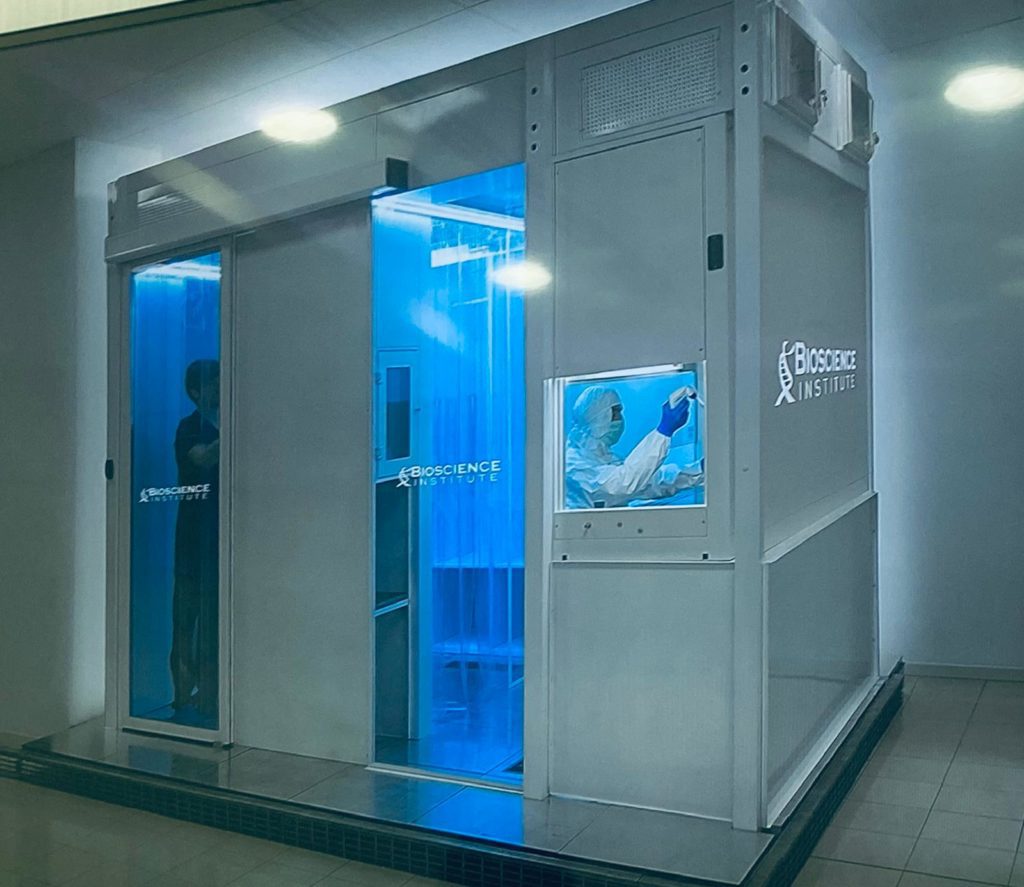
About Global Stem Cells Group
Global Stem Cells Group (GSCG) is a worldwide network that combines seven major medical corporations, each focused on furthering scientific and technological advancements to lead cutting-edge stem cell development, treatments, and training. The united efforts of GSCG’s affiliate companies provide medical practitioners with a one-stop hub for stem cell solutions that adhere to the highest medical standards.
Global Stem Cells Group is a publicly traded company operating under the symbol MSSV. https://finance.yahoo.com/quote/mssv/
- Published in News
Global Stem Cells Group Announces Training in Cochabamba, Bolivia at the End of November
The Global Stem Cells Group, a multi-disciplinary community of scientists and physicians that are collaborating to treat diseases and lessen human suffering through the advancement of the field of regenerative medicine has announced that the construction of their Stem Cell Center in Cochabamba, Bolivia, has concluded. What’s more, the organization has announced that, in celebration of the facility’s completion, the Center’s inaugural training course will take place at the end of November.
The new facility located in Bolivia is the 35th Stem Cell Center in the world, strengthening the Global Stem Cells Group’s presence worldwide as they seek to expand research for and the
practice of regenerative medicine across the globe. Representatives from the Group and local physicians in the area will both see the impact of this new clinic, which will offer a permanent space within the country where experts in the field can train Bolivian physicians in the latest stem cell research.
“I am very excited for the opportunity to train more Bolivian physicians. We’ve been laying the groundwork for this Stem Cell Center for a very long time, and it feels almost like a dream to have to ready to unveil to the world by the end of November,” Said Benito Novas, founder and CEO of the Global Stem Cells Group, “To be able to have a permanent location in Cochabamba, and to have spots quickly filling up for this training– I think it speaks volumes to the future of regenerative medicine being a bright one,”
This inaugural training is intended to not only teach physicians the value of incorporating regenerative medicine into their own clinics, but to ensure that there is a vast store of all the necessary equipment and supplies that are required for the wide array of cellular therapies that are available for patients around the world– including a highly interactive study session that goes over the extraction, isolation, and application of PRP, Adipose, ad Bone Marrow Stem Cells.
The Center will also provide access to several texts detailing procedure processes and treatment options that are available for reference after the training is completed.
If you are interested in learning more about the Global Stem Cell Group’s Onsite Regenerative Medicine Training, or to book your seat, you can visit us at our training website
About Global Stem Cells Group
Global Stem Cells Group (GSCG) is a worldwide network that combines seven major medical corporations, each focused on furthering scientific and technological advancements to lead cutting-edge stem cell development, treatments, and training. The united efforts of GSCG’s affiliate companies provide medical practitioners with a one-stop hub for stem cell solutions that adhere to the highest medical standards.
Global Stem Cells Group is a publicly traded company operating under the symbol MSSV. https://finance.yahoo.com/quote/mssv/
- Published in News
- 1
- 2

